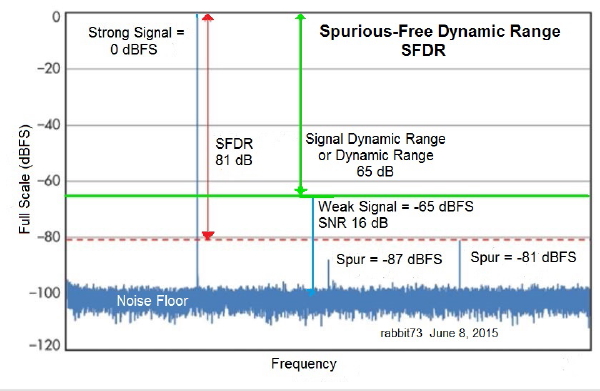Quote:
There is also another local station, WRNN (Channel 48) that broadcasts on the same tower, with a MUCH stronger signal level. For some reason, my TV seems to have an even tougher time keeping a lock on this channel than the weaker channel 32.
Thinking MAYBE the pre-amp was adding some noise or overloading the set, I have tried bypassing it, with no change to the ability to decode. Without the pre-amp, most of the other UHF signals don't make it to the TV. Although the lack of this station is not a big deal, I would like to understand what is happening.
|
How did you bypass the preamp? Did you completely remove it from the circuit?
What is happening is the difference between the strongest channels and the weakest channels is too great. This is called the dynamic range. If you need a preamp for the weakest channels, but a preamp will be overloaded by the strongest channels, then the dynamic range is too great.
You don't have just one very strong channel, you have two; that's what it takes to create IMD (Intermodulation Distortion) which produces spurious signals that come up from the noise floor and reduce the SNR of your weakest to below 15 dB making them impossible to decode. You are also creating fundamental overload that produces gain compression and harmonic distortion.

The Dynamic Range is measured from the top of the weakest desired signal to the top of strongest signal. The SFDR is the Dynamic Range plus the minimum required 16 dB SNR of the weakest required signal to keep the spurious signals ("spurs") below the noise floor of the weakest desired signal.
WRNN has a Noise Margin of 68.5 dB. If you add a conservative antenna gain of 14 dB, that brings you up to 82.5 dB, which is overload territory even before adding preamp gain.

Interpreting Noise Margin in the TV Fool Report
http://www.aa6g.org/DTV/Reception/tvfool_nm.html
Looking at it in terms of signal strength (power) WRNN has a signal power of -22.3 dBm.
-22.3 dBm + 14 dB ant gain + 22 dB preamp = +13.7 dBm; tuner overload
ATSC Recommended Practice:
Receiver Performance Guidelines
Document A/74:2010, 7 April 2010
RECEIVER PERFORMANCE GUIDELINES
5.1 Sensitivity
Quote:
|
A DTV receiver should achieve a bit error rate in the transport stream of no worse than 3x10E-6 (i.e., the FCC Advisory Committee on Advanced Television Service, ACATS, Threshold of Visibility, TOV) for input RF signal levels directly to the tuner from –83 dBm to –5 dBm for both the VHF and UHF bands.
|
5.2 Multi-Signal Overload
Quote:
|
The DTV receiver should accommodate more than one undesired, high-level, NSTC or DTV signal at its input, received from transmission facilities that are in close proximity to one another. For purposes of this guideline, it should be assumed that multiple signals, each approaching –8 dBm, will exist at the input of the receiver.
|